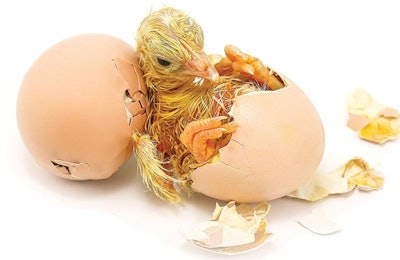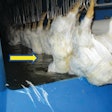
Using an imaging technique called optical spectroscopy, a group of European scientists has identified a way to determine the sex of a chick within four days of the egg being laid.
The method, which can be carried out in the egg without damaging them, can distinguish between male and female embryos through differences between the sexes in the egg fluids, according to Eureka Alert.
Being able to determine the sex of birds “in ovo” is key to end the culling of day-old male chicks in poultry industry, according to the paper, published in the journal, Analytical and Bioanalytical Chemistry.
Lead authors on the paper, Roberta Galli of the Technical University of Dresden (TU Dresden) in Germany and Gerald Steiner (TU Dresden and Vilnius University in Lithuania), explain that modern laying hens differ from broilers, and that the male birds of the laying strain are not profitable for meat production. As a result, worldwide, cockerels are euthanized as soon as they hatch, affecting an estimated seven billion day-old cockerels each year. This represents an ethical issue in the poultry industry, and it is the reason for the urgent international search for alternative solutions.
This paper reports on the continuation of earlier work at TU Dresden in which Galli, Steiner and others that showed that imaging techniques can be used to sex incubated chicken eggs. This they achieved by noting gender-specific biochemical differences in the embryonic blood contained within the egg shell. These differences are revealed in the near-infrared fluorescence spectrum.
In the latest tests on 380 eggs, the researchers were able to identify the sex of the embryo accurately in 93 percent of cases.
“In ovo sexing based on spectral analysis is non-invasive, does not require extraction of egg material and does not use consumables,” explained Galli. “Moreover, the method is applicable during the fourth day of incubation, before onset of embryo sensitivity at day seven, and is therefore in agreement with animal welfare.”
Steiner added that the results confirm the potential of this technique to develop commercial-scale systems for egg sexing that are not based on expensive spectrometers. It requires a few light detectors with suitable filters to measure the signal intensity in selected spectral ranges.
As soon as a commercially viable method of sexing chick embryos in the egg is available, egg producers have committed to end the practice of euthanizing male chicks after hatch.
Other research
Other research groups are also participating in the race to develop a practical test to determine the sex of a chick embryo in the egg. Hypereye, a non-invasive method developed by McGill University in Canada to sex the embryo on the day the egg is laid is expected to be available commercially by the end of 2017.
Reference: Galli, R., Preusse, G., Uckermann, O. et al. 2016. In-ovo sexing of chicken eggs by fluorescence spectroscopy. Anal. Bioanal. Chem. doi:10.1007/s00216-016-0116-6.


















